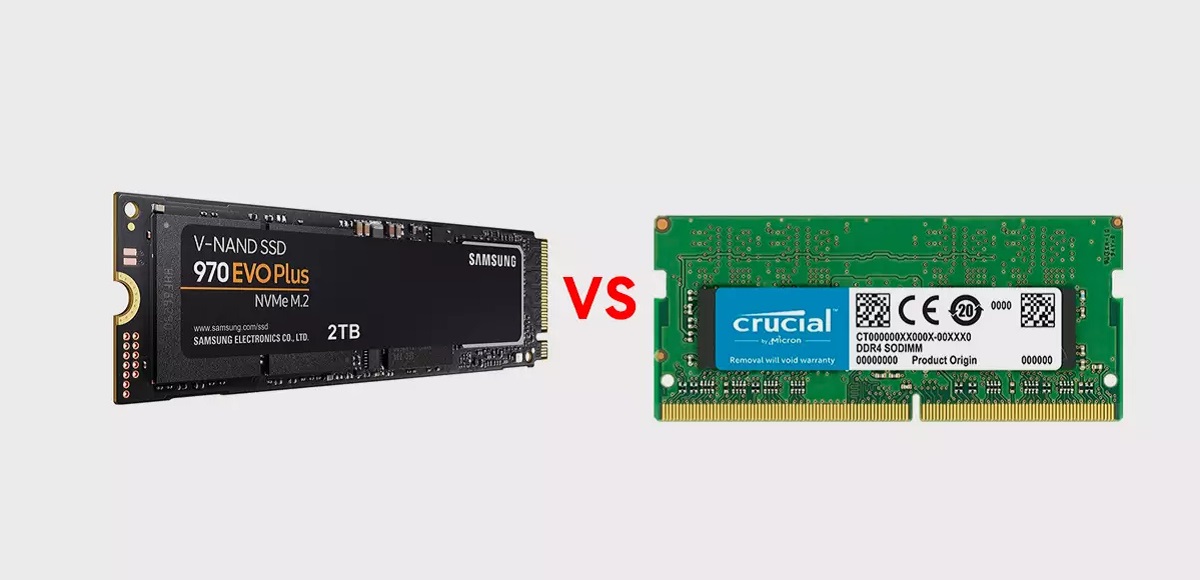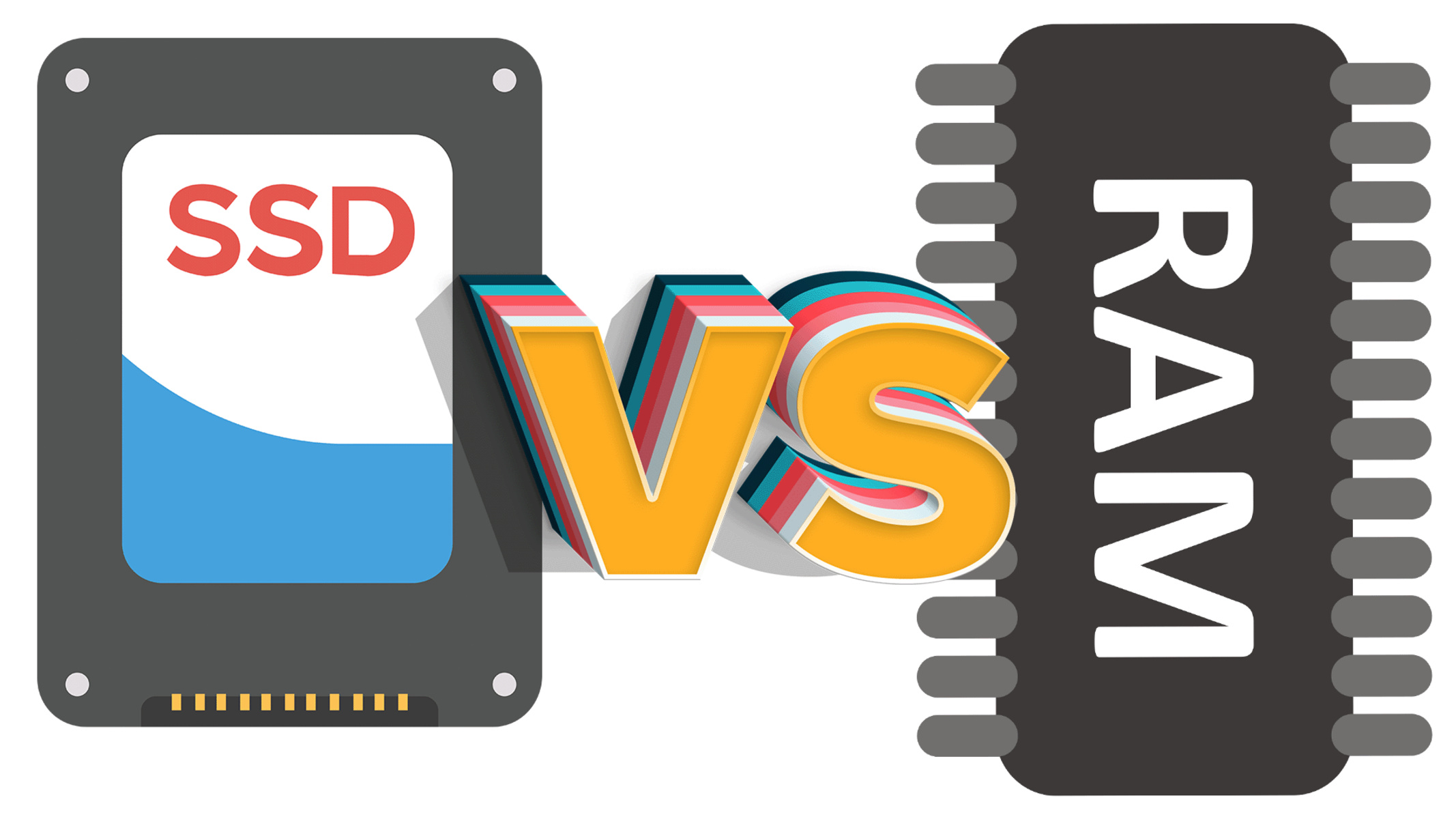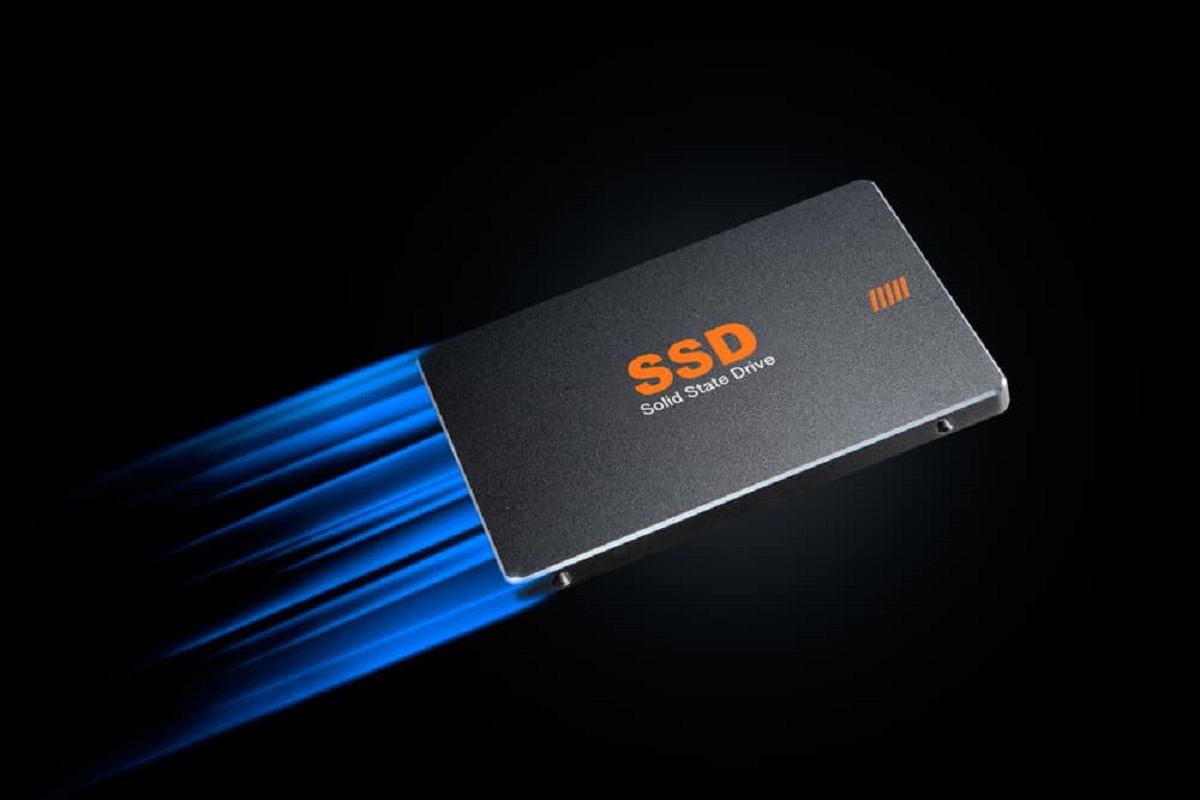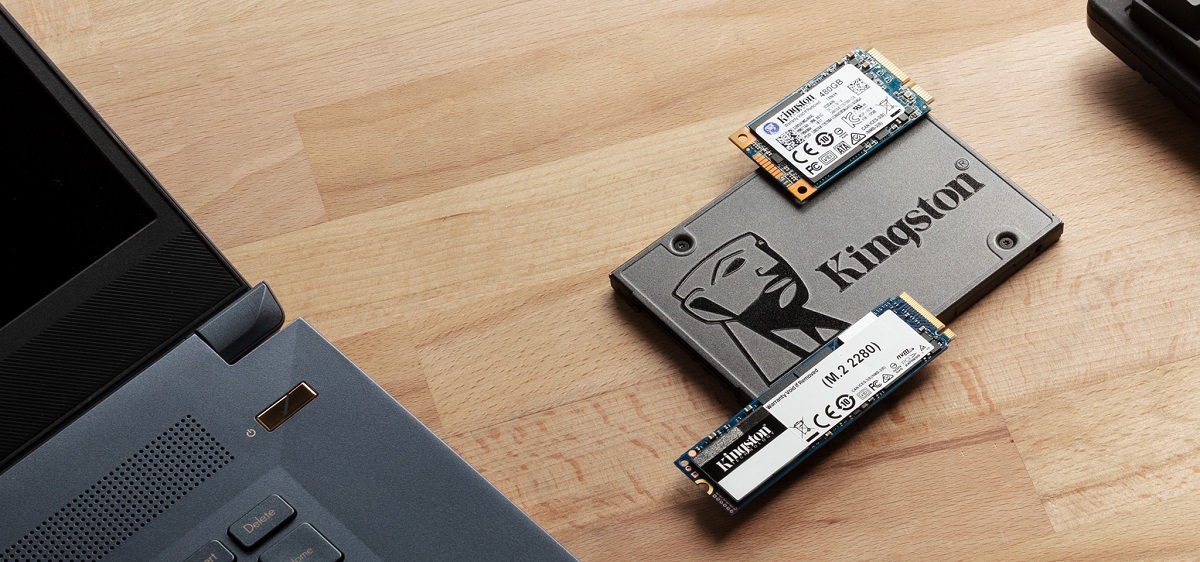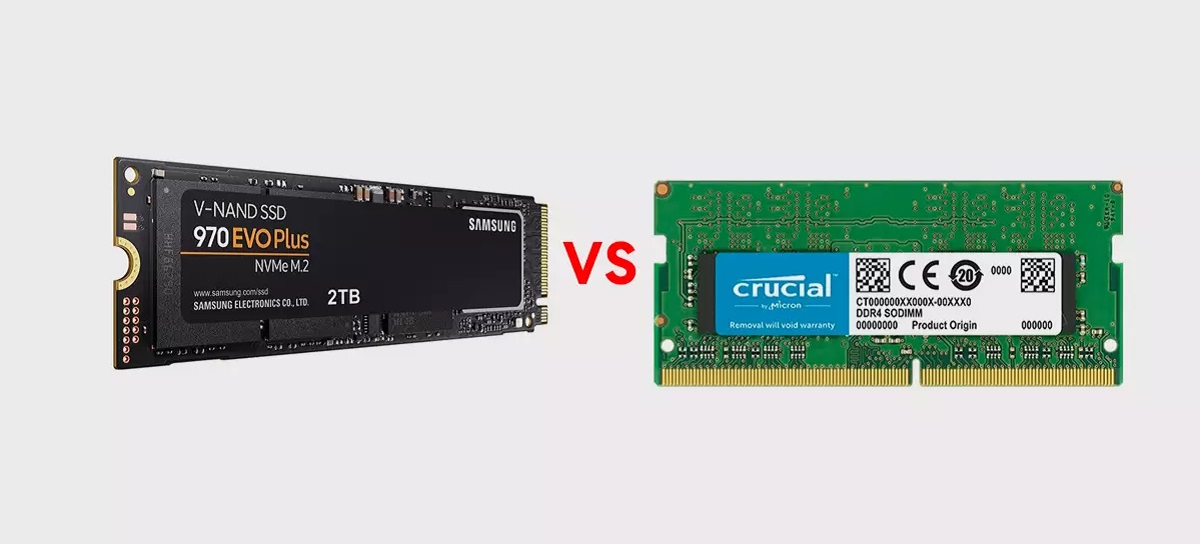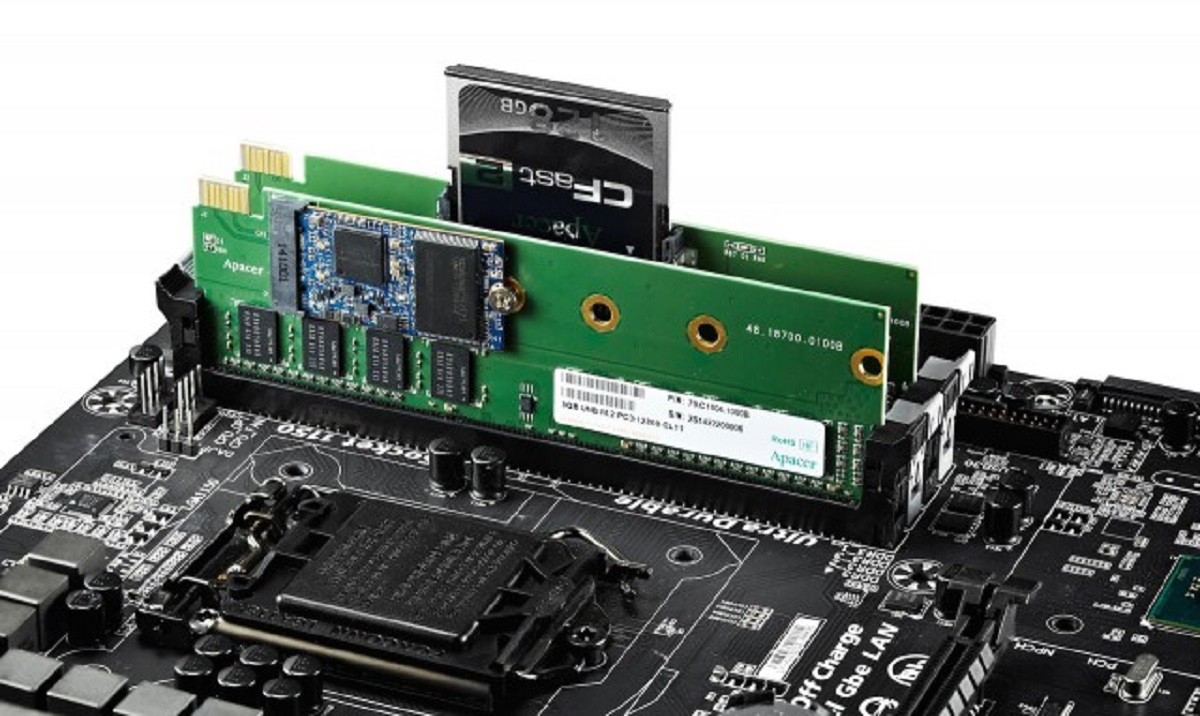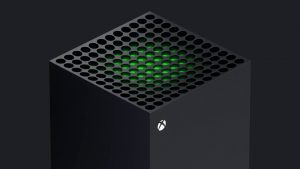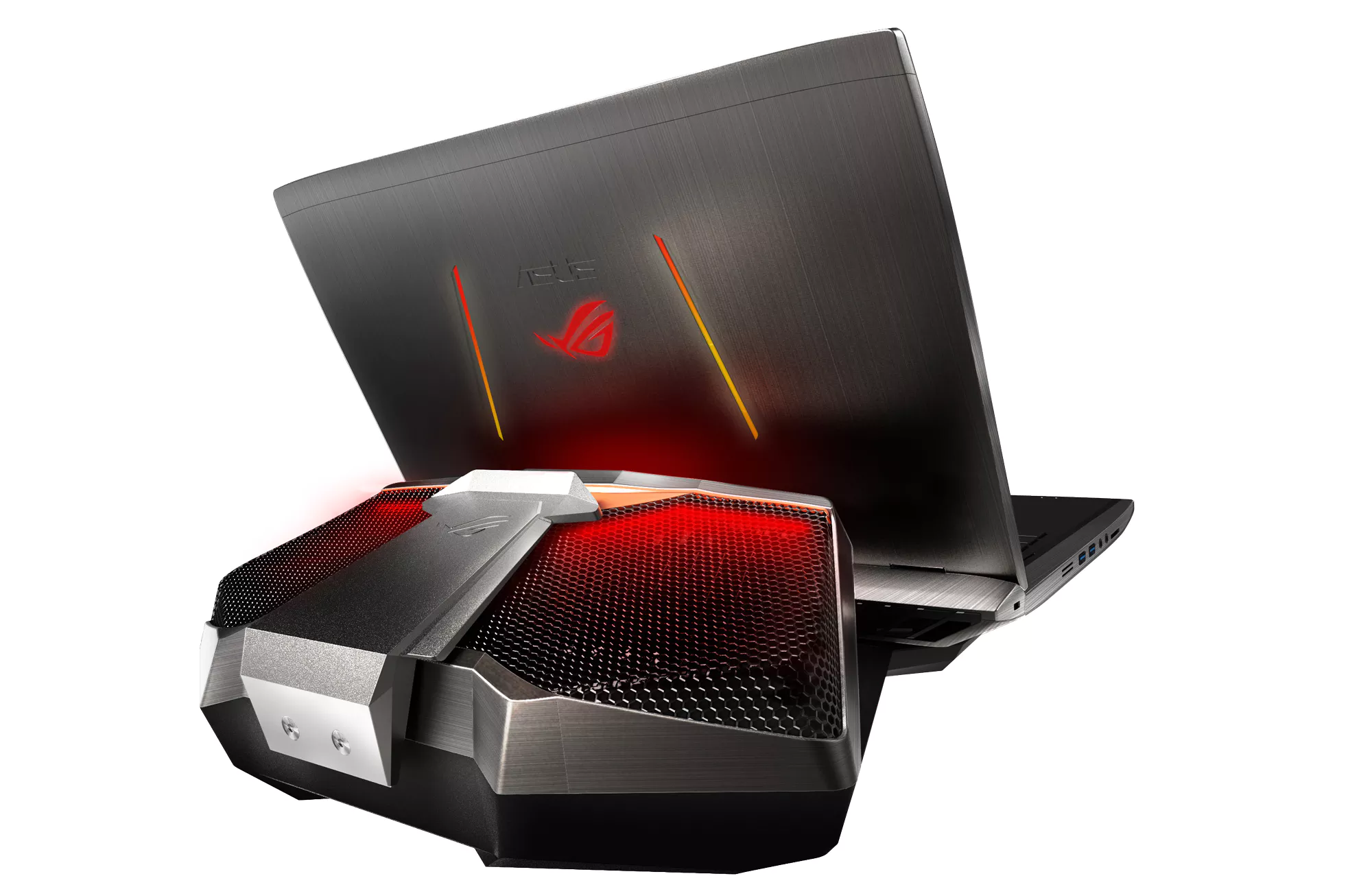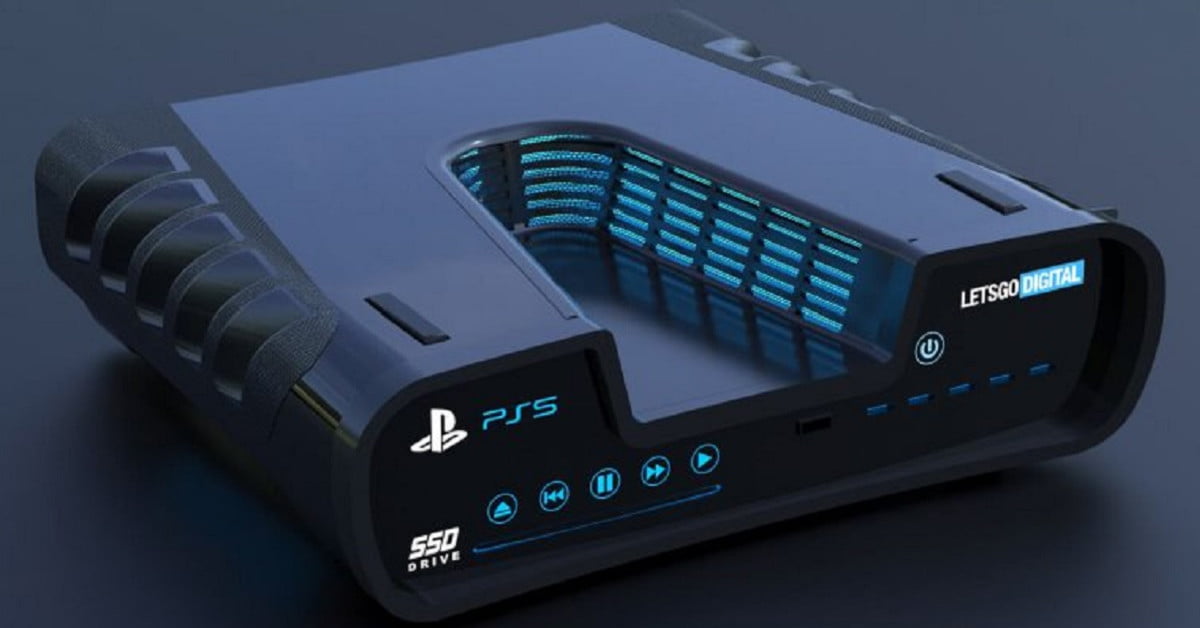Introduction
Welcome to the world of technology where the terms SSD and RAM are often thrown around. You may have come across them while shopping for a new computer or reading about the latest advancements in the tech industry. But what exactly are SSD and RAM, and how do they differ from each other? In this article, we will explore the definitions and differences between SSD and RAM to help you understand their importance in the world of computing.
SSD stands for Solid-State Drive, while RAM stands for Random Access Memory. These two components are crucial for the performance and functionality of a computer, but they serve different purposes. Let’s dive into the specifics of each to gain a better understanding.
An SSD, as the name suggests, is a storage device that uses solid-state memory to store and retrieve data. It is a non-volatile storage solution, meaning it retains data even when the power is turned off. On the other hand, RAM is a type of volatile memory that provides temporary storage for the computer to carry out tasks and processes.
While both SSD and RAM are essential for a computer’s functioning, they have distinct characteristics that make them suitable for different purposes. In the following sections, we will explore their differences in terms of speed, volatility, multitasking capability, and power consumption.
Definition of SSD
An SSD, or Solid-State Drive, is a type of storage device that uses flash memory to store and retrieve data. Unlike traditional hard disk drives (HDDs) that use spinning magnetic disks, SSDs have no moving parts. This makes SSDs more resistant to physical shocks, quieter, and faster in data transfer.
SSDs utilize NAND-based flash memory technology, which stores data in memory cells organized in a grid-like structure. Each cell can hold multiple bits of data, allowing for higher storage capacities in a smaller physical form factor.
The main advantage of SSDs lies in their speed. Due to the absence of mechanical components, SSDs offer significantly faster data access and transfer times compared to HDDs. This results in reduced loading times for programs and files, improved system responsiveness, and faster boot-up times.
Another notable characteristic of SSDs is their non-volatile nature. This means that data stored on an SSD remains intact even when the power is turned off. As a result, SSDs provide a reliable and secure means of storing data for long periods.
SSDs come in various form factors, including the conventional 2.5-inch drives that can be installed in laptops and desktops, as well as smaller M.2 drives that are commonly found in ultrabooks and compact devices. They connect to the computer’s motherboard via interfaces such as SATA or the newer NVMe (Non-Volatile Memory Express) protocol, which further enhances their performance.
Overall, the combination of faster access times, improved durability, and compact design makes SSDs an attractive storage solution for both personal and professional use. From speeding up your operating system to enhancing gaming experiences, SSDs are revolutionizing data storage and retrieval.
Definition of RAM
RAM, or Random Access Memory, is a type of volatile memory that provides temporary storage for a computer to carry out tasks and processes. It is an essential component in a computer system and plays a crucial role in overall performance.
RAM is responsible for holding data that is actively being used by the CPU (Central Processing Unit). It allows the CPU to quickly access and retrieve instructions and files needed to execute programs, perform calculations, and perform other tasks.
Unlike storage devices such as hard drives or SSDs, RAM is much faster at accessing data. It operates at speeds measured in nanoseconds, providing virtually instantaneous access to stored information.
RAM consists of memory modules that are inserted into memory slots on the computer’s motherboard. The amount of RAM in a system directly affects the number of tasks the computer can handle simultaneously and its overall performance. More RAM allows for smoother multitasking, faster program execution, and improved system responsiveness.
One important characteristic of RAM is its volatility. This means that the data stored in RAM is lost when the power is turned off or the system is restarted. RAM acts as a short-term working space for the computer, and its contents are constantly changing as different processes and programs are loaded and unloaded.
The capacity of RAM in a system can vary, ranging from a few gigabytes (GB) in entry-level computers to several terabytes (TB) in high-end servers. The choice of RAM capacity depends on the intended use of the computer and the specific requirements of the applications and processes being run.
In summary, RAM is a crucial component of a computer system that provides temporary storage for actively used data. Its speed and capacity directly impact the overall performance and multitasking capabilities of a computer, enabling faster and more efficient execution of programs and tasks.
Comparison
Now that we have a clear understanding of what SSD and RAM are, let’s compare them based on several key factors to understand their differences and how they contribute to overall computer performance.
- Speed: When it comes to speed, SSDs are the clear winners. They offer significantly faster data access and transfer times compared to traditional hard disk drives (HDDs) since SSDs have no moving parts. In contrast, RAM is even faster than SSDs, providing virtually instantaneous access to data. RAM’s speed is measured in nanoseconds, allowing for rapid retrieval of instructions and files needed by the CPU.
- Volatility: One major distinction between SSD and RAM is their volatility. SSDs are non-volatile, meaning data stored on them remains intact even when the power is turned off. On the other hand, RAM is volatile, which means that its contents are lost when the power is shut down or the system is restarted. This volatility is why RAM is used for temporary storage, while SSDs are used for long-term data storage.
- Capability for Multi-tasking: RAM plays a critical role in multitasking capabilities. The more RAM a system has, the more tasks and programs it can handle simultaneously without experiencing a slowdown. On the contrary, while SSDs can improve overall system responsiveness, they do not directly affect multitasking capabilities. However, an SSD can enhance multitasking indirectly as it allows for faster program loading times, making it easier to switch between applications smoothly.
- Power Consumption: SSDs have lower power consumption compared to traditional HDDs, making them more energy-efficient. This results in longer battery life for laptops and reduced electricity costs for desktop computers. RAM, on the other hand, requires significant power as it needs to maintain the active electronic state to hold data while the system is running.
Overall, SSDs and RAM serve different purposes in a computer system. SSDs focus on long-term storage and data retrieval, while RAM provides temporary storage for actively used data and enhances system performance. Both are crucial for optimal computer functioning, with SSDs improving speed and storage capacity, and RAM supporting multitasking capabilities and quick access to data. By understanding their differences, you can make informed decisions when it comes to selecting the appropriate storage and memory solutions for your computing needs.
Speed
When it comes to speed, both SSDs and RAM play important roles in enhancing overall system performance. However, there are key differences in terms of speed that set them apart.
SSDs are renowned for their impressive speed. Unlike traditional hard disk drives (HDDs) that rely on mechanical parts and spinning disks to read and write data, SSDs use flash memory technology to store and retrieve data. This absence of moving components allows for faster data access and transfer times. SSDs can deliver significantly higher read and write speeds, resulting in reduced loading times for applications, faster boot-up times, and improved overall system responsiveness.
On the other hand, RAM operates at even faster speeds than SSDs. It is designed to provide virtually instantaneous access to data that is actively used by the CPU. RAM’s speed is measured in nanoseconds, compared to the microseconds of SSDs. This quick access to data allows the system to run programs and processes at a high speed, ensuring smooth multitasking and faster execution of tasks.
It is important to understand that while SSDs offer faster data access speeds compared to HDDs, RAM outperforms both SSDs and HDDs in terms of speed. This is because RAM allows for rapid retrieval of instructions and files needed by the CPU, enabling it to process information at lightning speed.
It’s worth noting that increasing the amount of RAM in a system can have a significant impact on overall speed and performance. With more RAM, the system has more space to store frequently accessed data, reducing the need to fetch information from slower storage devices like SSDs or HDDs. This results in faster data retrieval and improved system responsiveness.
In summary, SSDs excel in terms of speed when compared to traditional HDDs, offering faster data access and transfer times. RAM, on the other hand, operates at even higher speeds, providing almost instantaneous access to data actively used by the CPU. By combining both SSDs and ample amounts of RAM, users can achieve a powerful computing experience with improved speed and responsiveness.
Volatile vs Non-Volatile
One fundamental difference between SSDs and RAM is their volatility. Understanding this difference is crucial in comprehending their respective roles in a computer system.
SSDs are non-volatile storage devices. This means that the data stored on an SSD remains intact even when the power is turned off. SSDs use NAND-based flash memory technology to store data, which retains information in a non-volatile manner. This makes SSDs reliable for long-term storage, as data remains intact and can be accessed even after extended periods of power-off time.
In contrast, RAM is volatile memory. This means that the data stored in RAM is only retained as long as the power supply is active. When the power is turned off, RAM loses its contents. RAM acts as a temporary storage solution for actively used data, allowing the CPU to quickly access and retrieve information needed for ongoing processes and tasks.
The volatility of RAM is what makes it suitable for rapid data access. By keeping frequently used instructions and files in RAM, the system can quickly retrieve them without having to rely on slower storage devices like SSDs or HDDs. However, this volatility also means that RAM cannot serve as a long-term storage solution since its contents are continually changing and require constant power to retain.
On the other hand, non-volatile storage devices like SSDs are ideal for storing data that needs to be preserved over longer periods. SSDs provide a secure and reliable means of storing files, documents, programs, and other data, even when the system is powered off. This makes SSDs essential for long-term storage needs, such as operating system installation, program storage, and data backups.
Overall, the volatile nature of RAM allows for fast and efficient data access, making it an integral part of a computer’s performance. The non-volatile nature of SSDs ensures data integrity and serves as a reliable storage medium for preserving information over extended periods.
To harness the combined benefits of both SSDs and RAM, systems typically use a combination of these storage technologies. This ensures optimal performance and efficient data management, where the fast access capabilities of RAM are utilized for immediate data retrieval, and the non-volatile storage of SSDs is employed for long-term storage needs.
Capability for Multi-tasking
RAM and SSDs differ in their capacities for multitasking, with RAM playing a more direct role in this aspect. Let’s explore how each component contributes to the multitasking capabilities of a computer system.
RAM, or Random Access Memory, plays a critical role in multitasking. It serves as a temporary storage space for actively used data, allowing the CPU to quickly access and retrieve information needed for various tasks and processes. The more RAM a system has, the more data it can hold at once, enabling smoother multitasking. With ample RAM, the system can handle multiple programs and processes simultaneously, resulting in faster execution and better performance.
With more RAM available, the system can store frequently used files, instructions, and program data, reducing the need to retrieve information from slower storage devices like SSDs or HDDs. This eliminates potential bottlenecks and improves overall system responsiveness when switching between different applications and tasks.
While SSDs do not directly influence multitasking capabilities, they can indirectly enhance the overall multitasking experience. SSDs contribute to faster program loading times, resulting in quicker switching between applications and seamless multi-program usage. The ability to quickly access and load programs from an SSD enhances the user experience with smoother transitions and reduced wait times.
Furthermore, SSDs provide faster data access for virtual memory operations. Virtual memory is a technique used by operating systems to allocate additional memory from the storage device when the RAM becomes overloaded. With faster read and write speeds, SSDs can efficiently handle these virtual memory operations, reducing the impact on system performance during times of high memory demand.
By combining a sufficient amount of RAM and an SSD, users can achieve a system that is capable of handling demanding multitasking scenarios effectively. The RAM provides ample space for keeping active data within rapid reach, while the SSD ensures fast program loading times and efficient virtual memory operations.
It’s important to note that the actual multitasking capabilities of a system depend on the specific hardware components, including the processor, RAM capacity, and the types of applications being used. However, in general, having ample RAM and fast storage devices like SSDs significantly contributes to a smoother multitasking experience and improved overall system performance.
Power Consumption
Power consumption is an important consideration when comparing SSDs and RAM, as it directly impacts the energy efficiency and battery life of a computer system.
SSDs are known for their lower power consumption compared to traditional hard disk drives (HDDs). This is because SSDs do not contain any moving parts that require energy to spin disks or move read/write heads. The absence of mechanical components in SSDs allows them to operate more efficiently, resulting in reduced power consumption. This energy efficiency not only translates to longer battery life for laptops but also contributes to lower electricity costs for desktop computers.
On the other hand, RAM requires a significant amount of power to maintain its active electronic state and hold data while the system is running. As RAM serves as temporary storage for actively used data, it needs a continuous power supply to retain its contents. This continuous power draw makes RAM a significant contributor to the overall power consumption of a computer system.
It’s worth noting that the power consumption of both SSDs and RAM can vary depending on factors such as capacity, speed, and technology. For example, high-performance SSDs or high-capacity RAM modules may consume slightly more power compared to their lower-end counterparts. However, in general, SSDs remain more energy-efficient compared to both HDDs and RAM.
Another point to consider is that the power consumption of SSDs and RAM is relatively low compared to other components in a computer system. Processors and graphics cards often have a much higher power draw, particularly during intensive tasks such as gaming or rendering. However, optimizing power consumption across all components, including SSDs and RAM, can contribute to overall energy efficiency and promote sustainable computing practices.
In summary, SSDs stand out for their lower power consumption compared to traditional hard drives, making them more energy-efficient and conducive to longer battery life. RAM, on the other hand, requires continuous power to maintain its active state and retain data, contributing to the overall power consumption of a system. While power consumption varies based on factors such as capacity and technology, considering energy efficiency in both SSDs and RAM can contribute to a more environmentally friendly and cost-effective computer system.
Conclusion
After exploring the definitions and differences between SSD and RAM, it is clear that these components play distinct roles in a computer system and contribute to its overall performance.
SSDs, or Solid-State Drives, provide non-volatile storage with fast data access and transfer speeds. They offer reliable and efficient long-term storage for files, programs, and operating systems. SSDs excel in terms of speed, durability, and energy efficiency compared to traditional hard disk drives (HDDs). Their flash memory technology delivers faster boot-up times, reduced program loading times, and improved system responsiveness.
RAM, or Random Access Memory, enhances system performance through its volatile memory capabilities. RAM provides temporary storage for actively used data, allowing for quick access and retrieval by the CPU. More RAM enables smoother multitasking, faster program execution, and improved overall system responsiveness.
It’s important to note that SSDs and RAM serve different purposes in a computer system. While SSDs focus on long-term storage and data retrieval, RAM provides temporary storage for actively used data and enhances multitasking capabilities.
By combining SSDs and RAM, users can achieve an optimal computing experience. SSDs provide efficient data storage and fast retrieval, while RAM ensures quick access to actively used data and facilitates smooth multitasking. These components work together to create a system that is both responsive and efficient.
When considering SSDs and RAM for a computer system, factors such as speed, volatility, multitasking capabilities, and power consumption should be taken into account. The specific requirements of the user and the intended use of the system will also influence the choice of storage and memory solutions.
In conclusion, SSDs and RAM are essential components that contribute to the performance and functionality of a computer. Understanding their differences and leveraging their strengths can lead to an enhanced computing experience, whether it’s faster program loading times, smoother multitasking, or improved overall system responsiveness.







